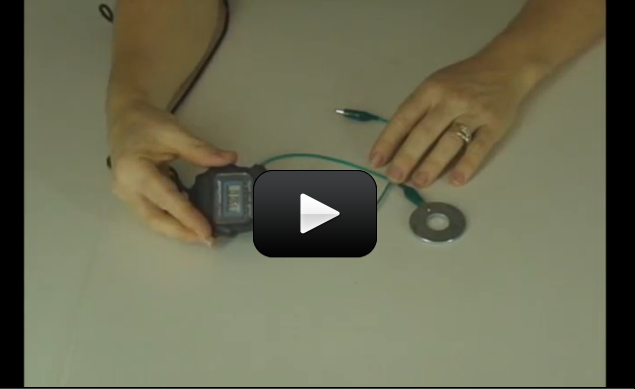In this experiment you will be adjusting the length of string of a pendulum until you get a pendulum that has a frequency of .5 Hz, 1 Hz and 2 Hz. Remember, a Hz is one vibration (or in this case swing) per second. So .5 Hz would be half a swing per second (swing one way but not back to the start). 1 Hz would be one full swing per second. Lastly, 2 Hz would be two swings per second. A swing is the same as a vibration so the pendulum must move away from where you dropped it and then swing back to where it began for it to be one full swing/vibration.
Please login or register to read the rest of this content.


Good question! You would treat it as two different problems, each with it’s own pendulum string length.
If something interferes with the string while the pendulum is swinging–but only on one side of its vibration path–and in effect shortens the string when it’s going one direction in the vibration, how is the whole thing measured?
So me an my boys and my daughter took rope and a put a loop in one end using a square knot and we hung my tape measure at one end and looped the rope around the top of our swing set one time. So we played around with the length of the rope and we got pretty darn close to 1 Hz at 4.99 seconds for five cycles. We then found the length for 0.5 Hz, but when we went for 2 Hz the rope was so short my tape measure was hitting the top of the swing set. 😛 It was a lot of fun and it opened up the door to talk about sound waves and what the different rates in Hz mean.
Try water first, since it’s a lot easier to see with smaller particles that can move easily among each other. Topsoil will need a larger driver, which means a bigger amp and lower frequency waves, which is difficult to come by for most folks. Did you see the demo in this section where you could actually see the speaker move in and out about once per second? Look in the experiments list near the bottom – I think it’s the last one.
I’d love to see a demonstration of the Hz moving sand. I tried with some top soil that was is a bucket and had no movement.
TINNITUS, or ringing ears, has a number of possible causes. Apparently many people suffer from this condition. Here are the possible causes if it troubles you more than just once in awhile:
– damage to the ear drum, which includes being exposed to loud noise (such as a gunshot) or continuous exposure to loud noise (listening to loud music a lot)
– sinus congestion: when the sinuses are congested, they are under pressure which affect the ears.
– hearing loss: as your hearing decreases, the inner ear hair cells get weaker, sending a signal to the brain. In quiet conditions this signal is heard as ringing.
– drug interaction, as many drugs have chemicals that interact with our bodies in negative ways, many affecting the nervous system, which includes our inner ear.
You know, I have often wondered that, too! I will look into it and get back to you when I hear more (sorry for the pun!)
Aurora,
Why do we get a very high pitch ringing in our ears?
Lori
Sometimes it just takes the right amount of jiggling force – but you can certainly try a longer string and see how it goes.
our three foot string was not long enough to get to half a hz… almost, but not quite- did we do it wrong or should we have started with a longer string?
You’re so welcome! Keep it handy for the next TWO teleclasses..
Aurora, I can’t thank you enough for the great prize I just recieved in the mail! It is awesome. THANK YOU SO MUCH!
For some reason we couldn’t make the frequency be 1 second, but the closest we got was 1.15 sec.
sevy keble 🙂